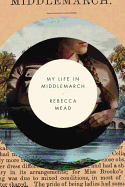
In the wonderful and thoughtful My Life in Middlemarch, Rebecca Mead revisits her love of George Eliot's novel to consider the ways life and art inform and imitate each other. The result is a lively, wide-ranging appreciation of one of the greatest novels in the English language.
Middlemarch was published in eight installments in 1871-1872, and Mead has structured her book in eight parallel chapters. She was 17 when she first read and fell in love with Middlemarch; she identified completely with Dorothea Brooke, who longs for a life of love and significance and whose unfocused yearning reflects the young Mead's own inchoate hopes.
Eliot's letters written at that age reveal an ardent young woman, religious and judgmental to the point of priggishness and ostentatiously eager in her ambitions, like many people on the verge of adulthood. In later chapters, as the characters in the novel age, Mead follows Eliot as she loses her faith, moves to London and becomes a well-known editor; she is spurned by a possible suitor but makes a happy match with George Lewes, whose is estranged from his wife but unable to divorce. She becomes stepmother to Lewes's sons in all but name. Mead reflects on her own journey to marriage and a blended family, finding the spirit of her experience in Eliot's life and in the novel.
Ultimately, Mead argues, Middlemarch's greatness goes beyond its scope and its ability to hold and reflect all of life's experience. It is Eliot's generosity, which forces readers to see themselves in even the most unsympathetic character, that makes this a novel not just for the young, but for all--and makes My Life in Middlemarch essential for any lover of literary fiction. --Jeanette Zwart, freelance writer and reviewer

